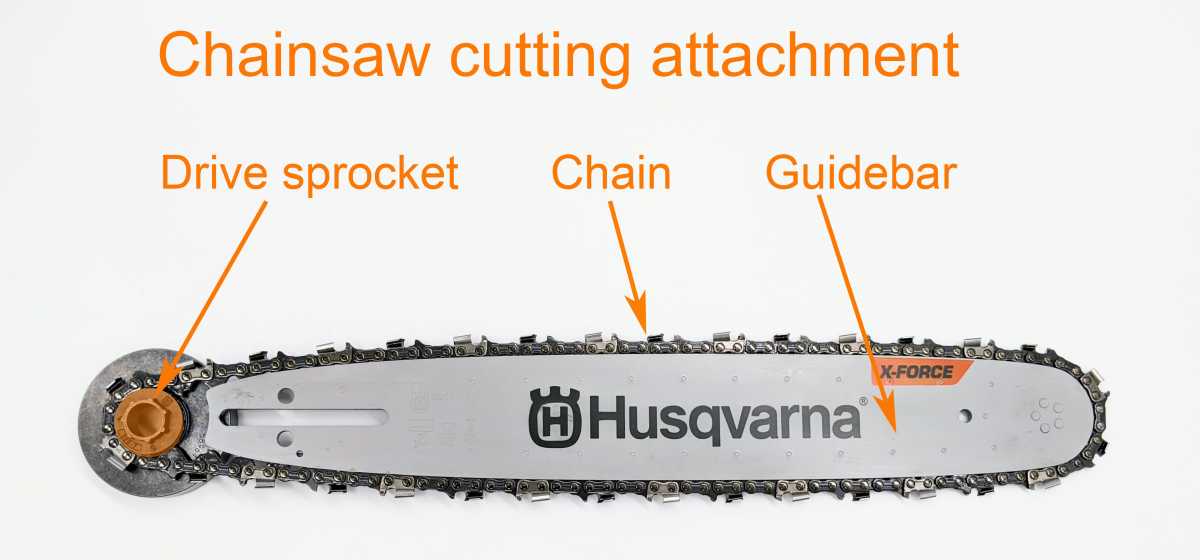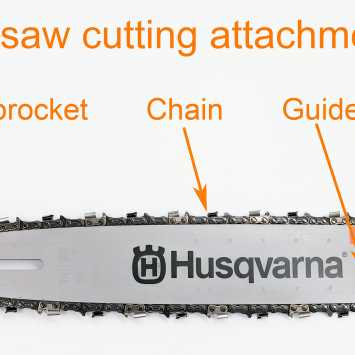The cutting attachment comprises a drive sprocket or gear, the guide bar and the chain.

All three work together to deliver a smooth, accurate and effective cutting performance. In advance of the later series of articles that cover the chain features and maintenance in greater detail, this short blog looks at the importance of the other components in this cutting attachment. It also looks at how they can impact a new or correctly maintained chain so that its performance falls short of the optimum.
- Guide bar
- Drive sprocket
- Chain
The drive sprocket connects to the chainsaw and delivers the turning force from the engine via the centrifugal clutch. The sprocket is either a one-piece unit with the bell housing integral or separate from the bell housing, slotting over a splined shaft.
The chain drive links fit into or mesh with the sprocket profile to allow efficient power transfer and a smooth and low vibration experience for the operator.
Drive sprockets need to match the chain pitch, this means the chainsaw chains drive links spacing matches the sprocket slots' distance exactly. Generally, saws will be specified with a single possible chain pitch but some have a couple of options, so be careful if changing to a heavier or lighter duty cutting attachment - all 3 parts of the cutting attachment will need to be replaced and must match.
Drive sprocket size affects chain speed, so needs to be carefully considered. One revolution of the engine causes one revolution of the drive sprocket. Larger diameter drive sprockets move more of the chain for every turn, increasing chain speed. This will result in faster cutting but it is not all positive, as the saw needs plenty of power to turn a larger gear and your PPE may not be adequate.
Over time, because of the metal-on-metal contact, the drive sprocket wears. Acceptable wear is around 0.5mm and can be readily assessed on Oregon sprockets by looking at the wear line, or on Stihl by using the handy sprocket wear tool - this has a couple of 0.5mm pins that can be used to gauge wear level.
A useful guide is to change the sprocket every 2-3 chains, or fit a new chain onto a new sprocket and run them in sets since more rapid wear will result from having the wear levels mis-matched - either work drive links in a new sprocket or a worn sprocket with a new chain.
Guide bars support the chain as it rotates and is available in various shapes and lengths. The maximum bar length option for your saw may offer an underwhelming cutting experience, so a good plan is to go with a mid-length option, such as the 15” guide bar we run on our Husqvarna 550XPs.
The kickback zone in the upper part of the bar tip is smaller on more pointed bars, this is a great example of how guidebar choice can offer safety benefits in terms of reduced kickback.
They can be moved relative to the engine unit to fine-tune chain tension. A correctly tensioned chain will be unlikely to de-rail, deliver a smooth cutting performance and maximize the lifespan of all 3 parts of the cutting attachment.
Tension your chain by tightening it to the point that it lifts at the sprocket end with hand-tightened side casing fixings. Test by spinning it with a suitable tool and gloved hands, it should require a little force to overcome the inertia, then flow freely and stop when the turning force ceases.
Friction and wear are minimised when sufficient lubrication oil is pumped, via the side delivery hole, into the channel or groove where the drive links fit. Professional saws will generally feature an adjustment to the fine-tune oil delivery, perhaps in light of bar length or the prevailing cutting conditions.
Bar rails should be level, and at 90 degrees to the flat surface. Over time, poor sharpening or a cutting bias can lead to differential guidebar wear. The result of this wear is a chain leaning over to one side - just one example of how, no matter how many new chains you add, the guidebar fault will always result in poor quality, curved cutting.
Chains are, of course, the subject of this blog series. It’s worth remembering they are produced in long lengths, split and joined as continuous loops. We sometimes demonstrate this in our courses.
Standard sizes allow a range of brands to be fitted - watch out: the machine, bar and chain may be made by different companies.


